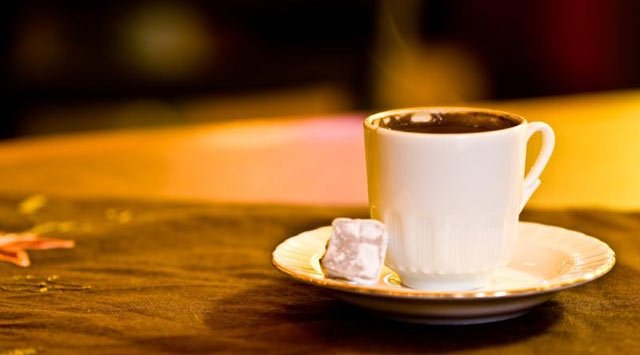Hello me dear Steemit friends.
Hope you are doing fine.
Today I want to tell you about the one of the most tasteful drinks - Turkish coffee.

Source
Everyone knows that coffee in Turkey does not grow, but, nevertheless, Turkish coffee is famous throughout the world. Turkish coffee, is a way of making coffee, not the coffee itself. When we say "Turkish coffee", we immediately imagine a hot aromatic drink served in a beautiful vessel that will cheer up in the morning, raise the tone in the daytime and add strength in the evening.
Indeed, coffee has never been grown in Turkey, but the tradition of drinking coffee in Turkey goes back to the depths of the centuries. In the long history of Turkey, many nations have influenced its culture and national customs, and the culture of coffee consumption has also been introduced to Turkey from the south. But, despite this, today coffee can be considered as a national Turkish drink, like Turkish tea. 2013 Turkish coffee has been added to Unesco’s intangible cultural heritage list.
Despite the fact that the Turks brought Europe coffee to Europe, the European way of making coffee is very different from that in Turkey. In Turkey, coffee beans are crushed very thinly, and to achieve the maximum taste and the greatest flavor of the beverage, the coffee beans are fried in small portions and then grinded while they are still warm.
Coffee in Turkey can also be bought already ground, but it is brewed in Turkey exclusively in Cezve - small metal vessels with a long handle.
Turkish coffee is served in small cups, which are also used to measure the right amount of ingredients. You should drink coffee very slowly, every sip should be washed down with ice water, which greatly enhances the taste. Coffee is usually served halva, lokum, honey or dates.
Thanks for taking the time to look over my post. We are continue to explore the beauty of Turkey. Follow to not miss the next post))) Have a nice day!



